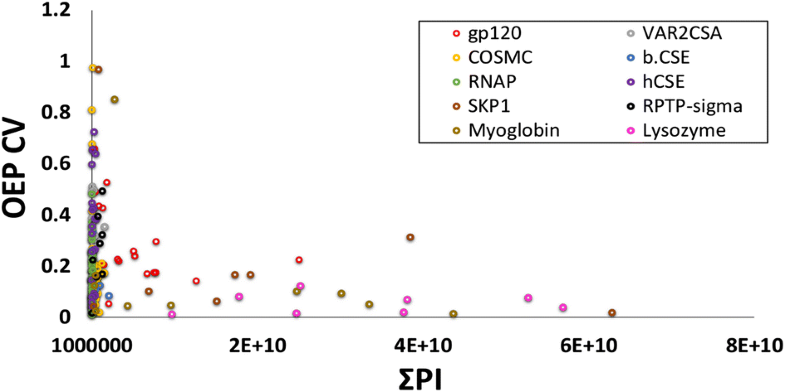Variation in FPOP Measurements Is Primarily Caused by Poor Peptide Signal Intensity |
| |
| Authors: | Niloofar Abolhasani Khaje Charles K. Mobley Sandeep K. Misra Lindsey Miller Zixuan Li Evgeny Nudler Joshua S. Sharp |
| |
| Affiliation: | 1.Department of BioMolecular Sciences, School of Pharmacy,University of Mississippi,University,USA;2.Department of Biochemistry and Molecular Pharmacology,New York University School of Medicine,New York,USA;3.Howard Hughes Medical Institute,New York University School of Medicine,New York,USA |
| |
| Abstract: | Fast photochemical oxidation of proteins (FPOP) may be used to characterize changes in protein structure by measuring differences in the apparent rate of peptide oxidation by hydroxyl radicals. The variability between replicates is high for some peptides and limits the statistical power of the technique, even using modern methods controlling variability in radical dose and quenching. Currently, the root cause of this variability has not been systematically explored, and it is unknown if the major source(s) of variability are structural heterogeneity in samples, remaining irreproducibility in FPOP oxidation, or errors in LC-MS quantification of oxidation. In this work, we demonstrate that coefficient of variation of FPOP measurements varies widely at low peptide signal intensity, but stabilizes to ≈?0.13 at higher peptide signal intensity. We dramatically reduced FPOP variability by increasing the total sample loaded onto the LC column, indicating that the major source of variability in FPOP measurements is the difficulties in quantifying oxidation at low peptide signal intensities. This simple method greatly increases the sensitivity of FPOP structural comparisons, an important step in applying the technique to study subtle conformational changes and protein-ligand interactions. |
| |
| Keywords: | |
| 本文献已被 SpringerLink 等数据库收录! |
|

